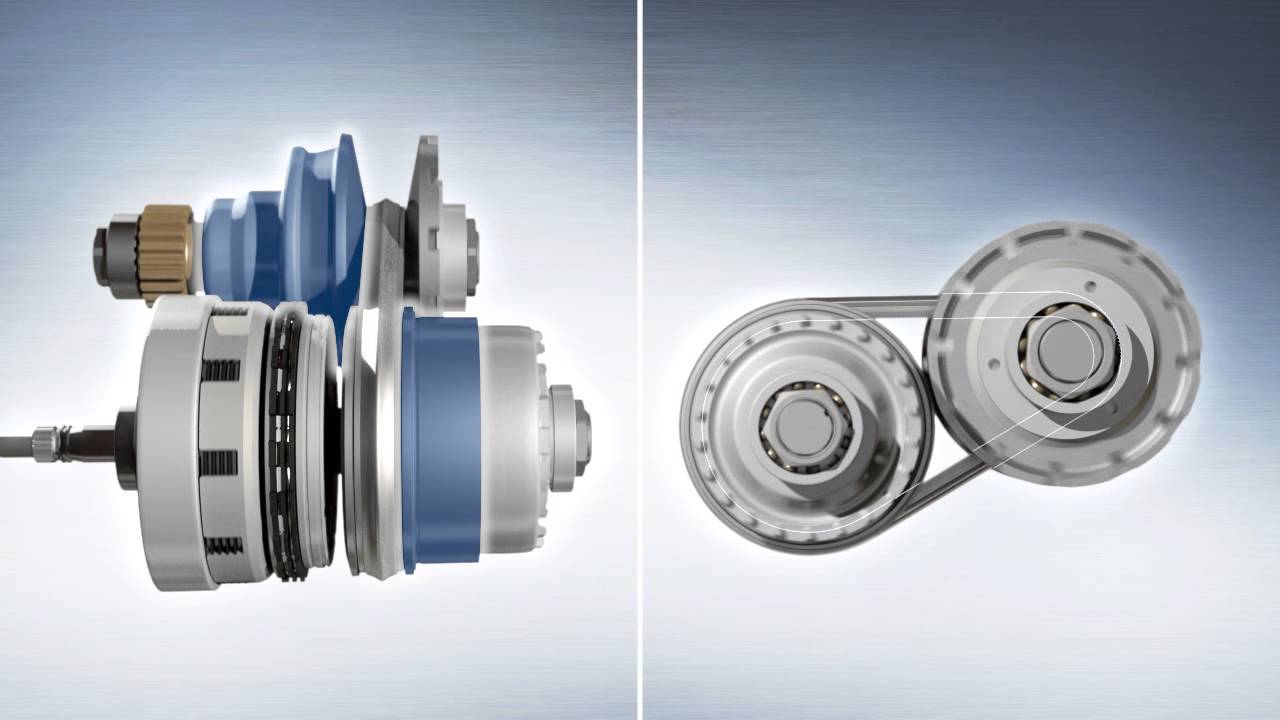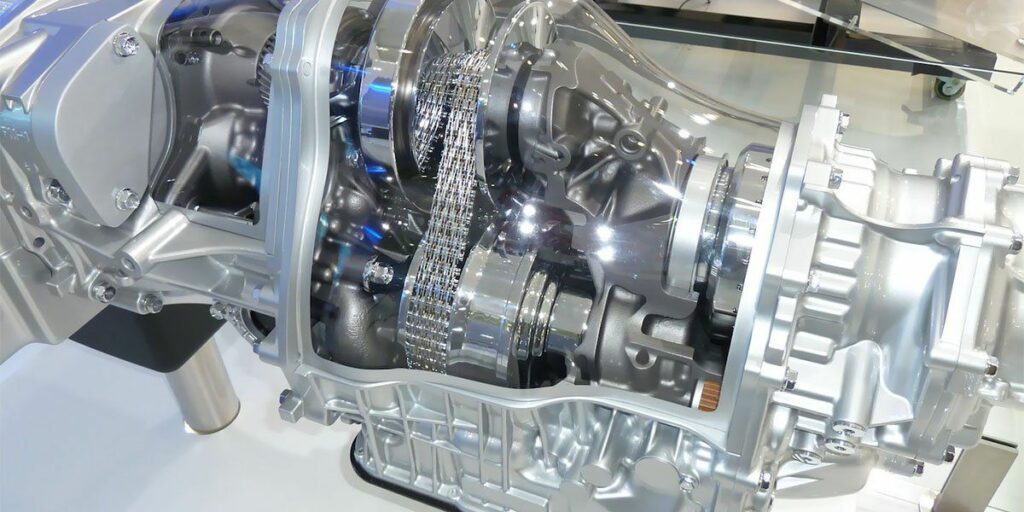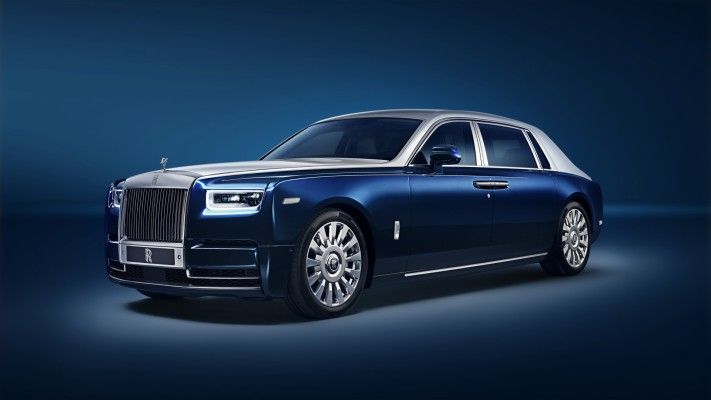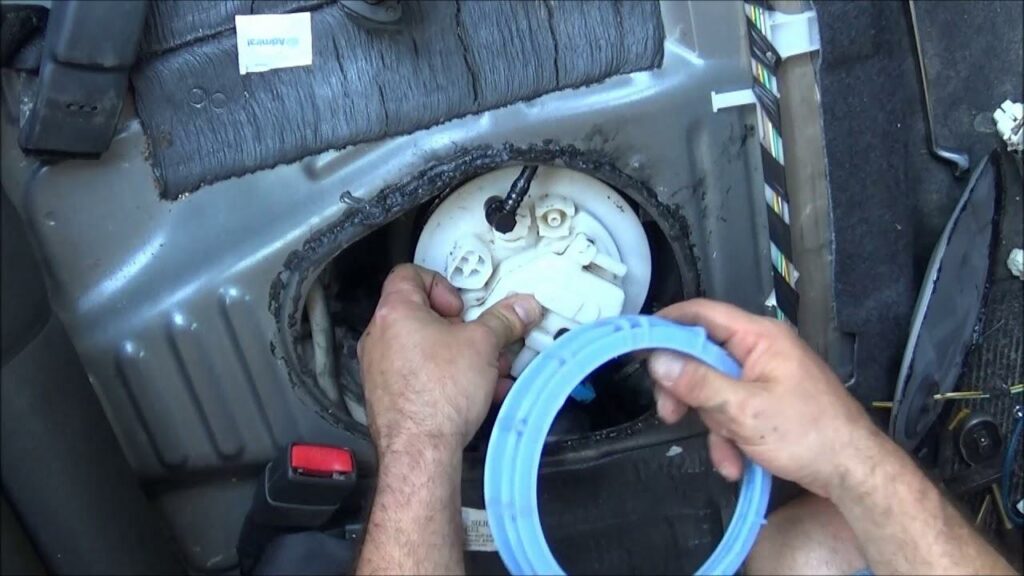
A growing number of cars and sport utility vehicles now come with a continuously variable transmission (CVT) instead of a conventional automatic. CVTs have been used in passenger cars since 1989, but if you haven’t been car shopping in several years a CVT may be new to you. Here’s a quick overview of the CVT transmission:
CVT Transmission Definition

A conventional automatic transmission uses a complex series of gears to send the engine’s power to the wheels. But a CVT has no gears at all. Instead, it uses a pair of variable-width pulleys that are connected by a belt. One pulley connects to the engine, while the other sends power to the wheels. The key here is that the width of the pulleys changes according to how much power is needed. One gets larger as the other becomes smaller. This allows a CVT to deliver strong and seamless acceleration. A second, less common, type of CVT uses a series of discs and rollers.
Though there are no gears in a CVT, some allow manual “shifting.” Here, the belt-and-pulley system moves to preset points that simulate changing gears. This is accomplished either by moving the shift lever or clicking on steering-wheel-mounted paddles. As an example, the CVT in the 2019 Subaru Ascent SUV comes with eight of these shift points.
In the latest twist on the technology, the CVT in the 2019 Toyota Corolla Hatchback adds what’s called a “launch gear.” This is like first gear in a standard transmission. The launch gear handles the car’s acceleration at speeds up to 25 mph, after which the transmission switches over to the belt-and-pulley system. Toyota says having the launch gear enables stronger and smoother acceleration from a standing start.
How Does a CVT Transmission Work?
Automakers are using CVTs for several reasons. A CVT can get maximum power out of a small engine for quicker and more responsive acceleration. That’s why you’ll most often find CVTs used in vehicles having four-cylinder engines.
CVTs deliver seamless acceleration without interruption for gear shifts. They also eliminate abrupt downshifting when additional power is needed for passing. A CVT likewise operates smoothly while climbing hills. This avoids the “gear hunting” you’ll often feel with a conventional automatic transmission. And because a CVT is lighter in weight and delivers better power efficiency, it helps improve a vehicle’s fuel economy. That’s why many hybrid-powered vehicles come with CVTs.
However, some drivers find the sensation of continuous acceleration without shift points to be unnerving. Another common complaint is that a CVT sometimes tends to make a vehicle seem excessively loud or harsh. That’s because it forces the engine to run at high rpm (revolutions per minute) as the vehicle gets up to speed.
Are CVT Problems Common?

CVTs are not without mechanical problems, however. And as with conventional automatics, it can be expensive to repair or replace a CVT. Search the website www.carcomplaints.com and you’ll find several common issues with CVTs. These include overheating, slipping, jerking, shuddering, and a sudden loss of acceleration.
As with any transmission, there are some cases where a CVT has failed altogether. The CVT belt, in particular, can be subject to excessive wear and stretching. In some extreme cases, owners filed lawsuits against automakers because of poor and unreliable CVT performance.
Which Cars Have a CVT or an Automatic Transmission?
If you’re car shopping, it may be difficult to tell whether a vehicle is equipped with a CVT or a standard automatic transmission. Both types look the same, with a shift lever that includes drive, neutral, and park selections.
CVTs are most commonly used in Mitsubishi, Nissan, and Subaru cars and sport utility vehicles. Honda and Toyota are now including them in a wider range of models as well. They’re still far more common among Japanese import brands than domestic or European imports. Generally, a given model offers either a CVT or a conventional automatic. The 2018 Honda Accord is the rare vehicle that offers both types. But in this case either transmission is available only with a specific engine, so buyers still don’t have a choice in the matter.
There are several ways to tell which type of transmission a given vehicle includes. You can find this information on an automaker’s website, a printed brochure, or the window sticker if it’s a new vehicle. If you’re used car shopping it may require added research.






